Six Ancient Kilns in Japan “Tamba Ware Village” - Explore the Kondacho Tachikui Area

Did you know that there is a pottery village with over 800 years of history in Hyogo Prefecture? Tamba Ware is a pottery production site representative of Japan and is a Japanese heritage site* The village road is only about 4km but has about 50 Tamba Ware potteries. The KondachoTachikui area is packed with unique features! This article features an exploration of the Tamba Ware village and how to enjoy visiting potteries.
What is Tamba Ware with over 800 Years of History?
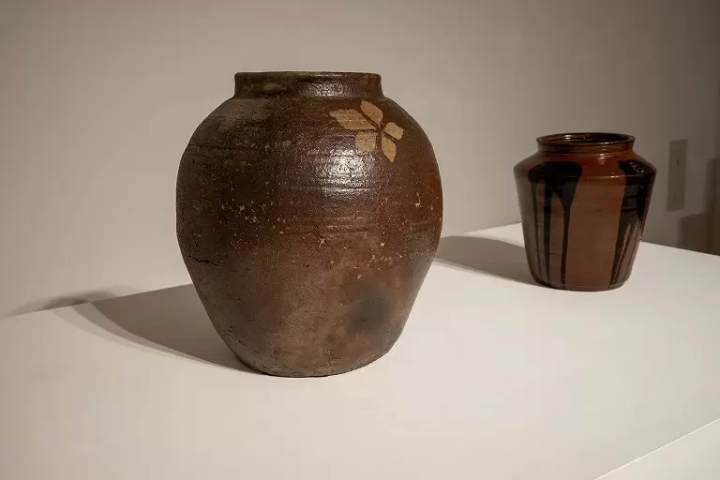
There are pottery producing areas all over Japan, and pottery has always been deeply connected to people's lives. Tanbayaki, which originated in Tamba Sasayama about 800 years ago and began as a way to make tsubo* and kame* for storing water and grains, is no exception.
Six Ancient Kilns in Japan* are six leading production sites in Japan that continue to produce pottery from the Middle Ages to the present. Tamaba Ware is known to be one of the six.
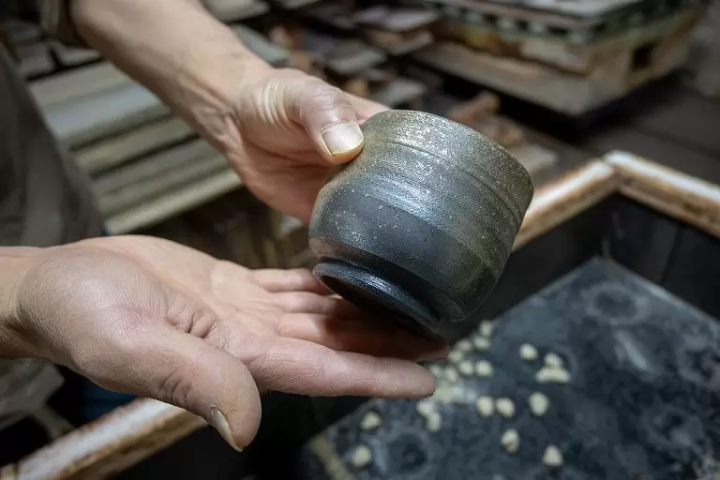
Tamba Ware features completely different styles depending on the era and the creator. Tamba Ware has no distinct “Tamba Ware-like color or shape.” Even within the same potter, they often produce different styles of pottery depending on the craftsman. For example, masters and their disciples often make wares with completely different impressions.
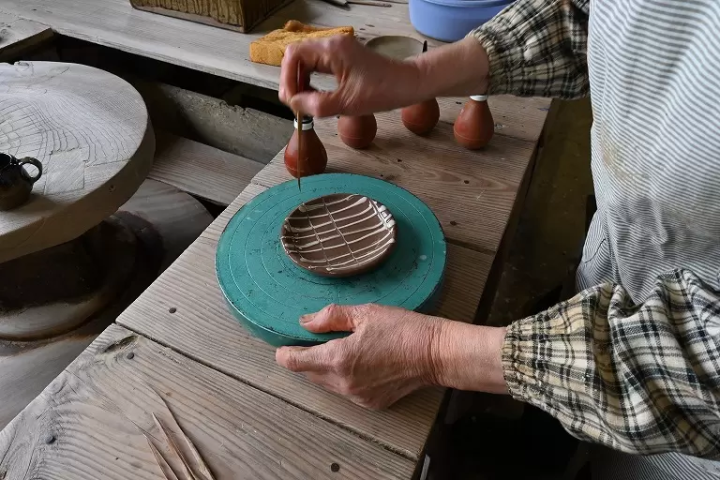
The reason for these features arises from the fact that Tamba Ware always matched the lives of the people in a given era to produce crafts.
Folk-craft movement creators like Muneyoshi Yanagi* and Bernard Leach, who found new values in pottery and crafts designed for daily lives, loved and found values in Tamba Ware.
I want to know more about the history of Tamba Ware! I want to actually see Tamba Ware from a few hundred years ago! If you thought this, we recommend visiting The Museum of Ceramic Art, Hyogo in KondachoTachikui.
More information is available in the article “Visit The Museum of Ceramic Art, Hyogo and Learn, See, Enjoy Tamba Ware.”
*Japan’s Six Ancient Kilns……include Echizen Ware, Seto ware, Tokoname ware, Shigaraki ware, Tamba Ware, and Bizen ware. They are Japanese heritage sites.
(URL: https://www.japan.travel/japan-heritage/popular/a4966b88-09bc-4beb-9d38-d055c65761ec)
*Japanese heritage sites... Agency for Cultural Affairs certified these sites to tell stories about Japanese culture and tradition through historical appeals and features of local regions. Local municipalities develop and utilize tangible and intangible cultural properties that are appealing in each region. It is a system to preserve Japanese cultural heritage by promoting them in Japan and overseas and vitalizing local communities.
*Muneyoshi Yanagi...is a Japanese philosopher and art critic. He is known as the founder of the folk-craft movement (a movement that re-evaluated the beauty and value of Japanese traditional crafts and promoted the use of handmade crafts in daily life).
*"Tsubo" are traditional Japanese pottery containers. They are round and narrow at the mouth and wide at the base. They are often used for decorating flowers and storing tea or sake. They are mainly used for decorative purposes.
*"Kame" are traditional large Japanese jars. They have a big mouth and the overall shape tends to be round. They are mainly used for storing large quantities of food or drinks and are often used for preparing miso and pickles. They are practical storage containers.
Tamba Traditional Craft Park: Sue no Sato, where Pottery Works from over 50 Potteries Gather
There are currently about 50 potteries in the Kondacho Tachikui area called the “Tamba Ware Village.” Some have been in the area for generations over hundreds of years and some have come from another region to start a new pottery. Many young craftsmen are producing great works.
If you are not sure which potter to visit, we recommend going to Tamba Traditional Craft Park: Sue no Sato.
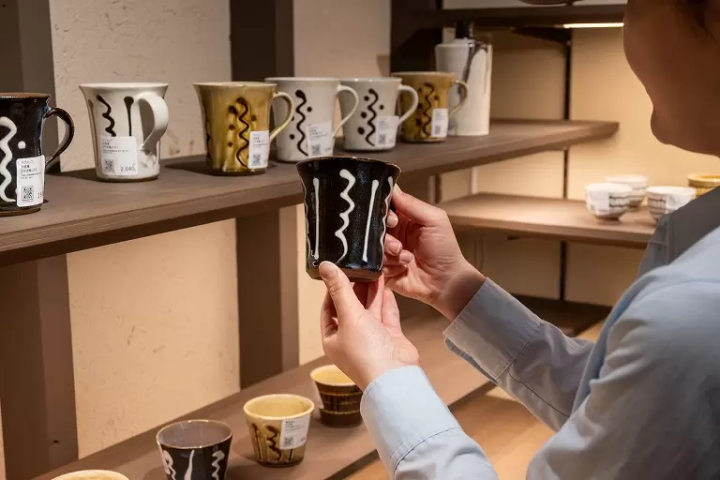
Sue no Sato exhibits and sells various works from about 50 potteries, including traditional Tamba Ware and works with artistic designs.

Some potters make adorable incense holders. You can buy them with a miniature tatami mat produced in Awaji to make a small Japanese space the size of your palm. Incense is also a special product produced in Awaji Island, Hyogo Prefecture so they are good souvenir combination with other Hyogo crafts.
You can purchase products here, but if you find interesting works, how about visiting that potter?
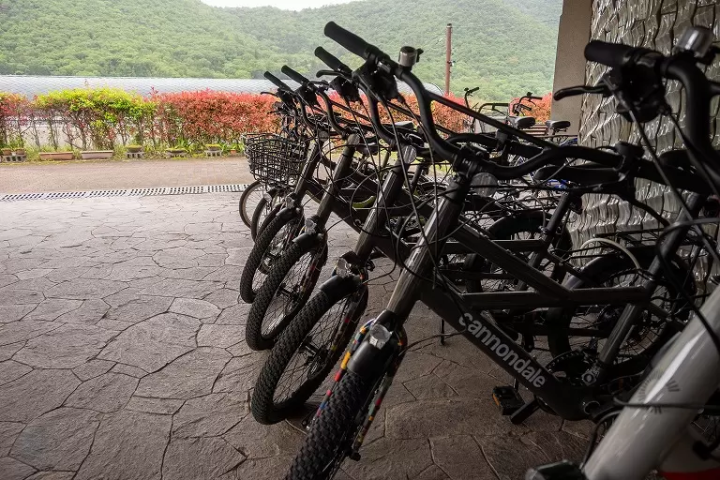
You can visit potters by car or on foot, but Sue no Sato also offers a rental bicycle service. It would also be a good idea to take advantage of easy-to-maneuver bicycles to explore the area.
At Sue no Sato, you will also find Art Gallery Tamba which exhibits Tamba Ware and various other artworks like paintings and sculptures, as well as Shishigin, a restaurant that offers Japanese food using local ingredients.
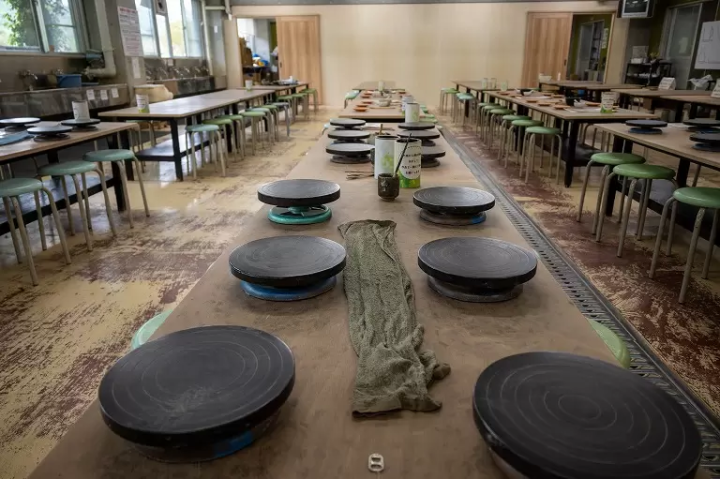
In particular, a great travel memory would be to join workshops where you can enjoy clay crafts and painting. No reservation is required to join and you can make containers freely at the advice of an expert. Touching clay and turning a potter’s wheel would be a precious memory.
Potteries take about 2 months to be heated. They can be shipped overseas, but there are shipping costs and breakage risks. As a result, many travelers often enjoy just the clay craft workshop.
Discovering the Life of a Craftsman and the God of Fire at a Pottery
Most potters who make Tamba Ware have workshops and galleries near their homes or in the same building. This is a rare region where potters do everything from making potteries to selling them.
Many other pottery production sites have wholesalers who get wares from craftsmen to sell them at stores and to customers. However, at the Tamba Ware village, craftsmen sell their own work. This is due to the location of Tamba-Sasayama, where it is easy to go to big cities like Osaka and Kyoto, with close relationships between craftsmen and customers.
As a result, the Tamba Ware village welcomes guests warmly as part of its culture since ancient times.
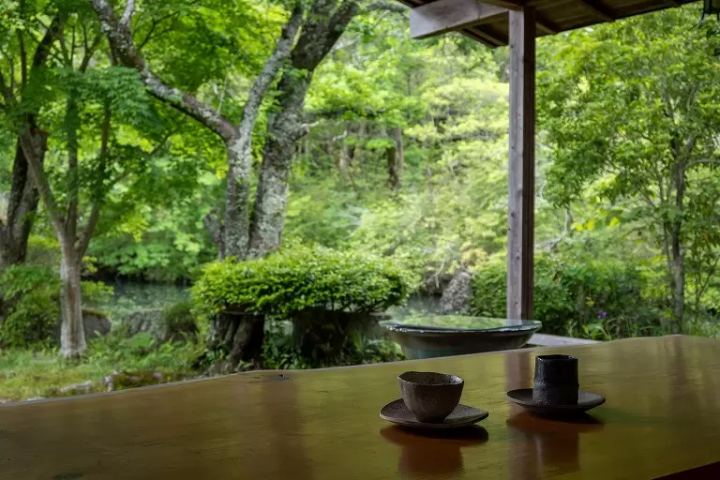
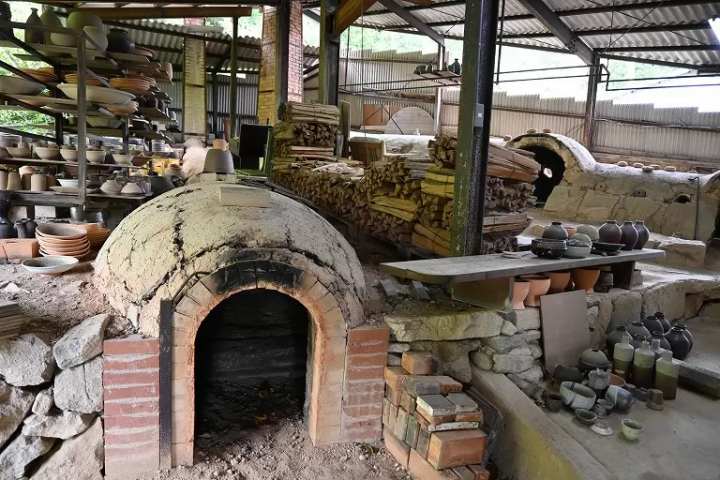
Toukatsugama has been around for seven generations and has a special space for guests. Guests can enjoy coffee and tea at a spacious wooden deck overlooking rich greenery and shore.
Nearby is a climbing kiln and a tunnel kiln made from bricks and red clay that are sure to astound visitors.
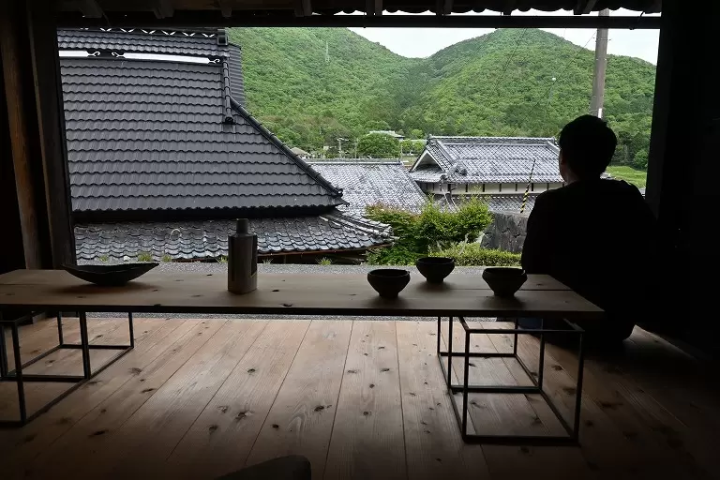
Toukatsugama’s Katsuki Ichino is an artist who exhibits at many public and solo exhibitions. He renovated an old Japanese house that he lived in into a gallery to exhibit his works.
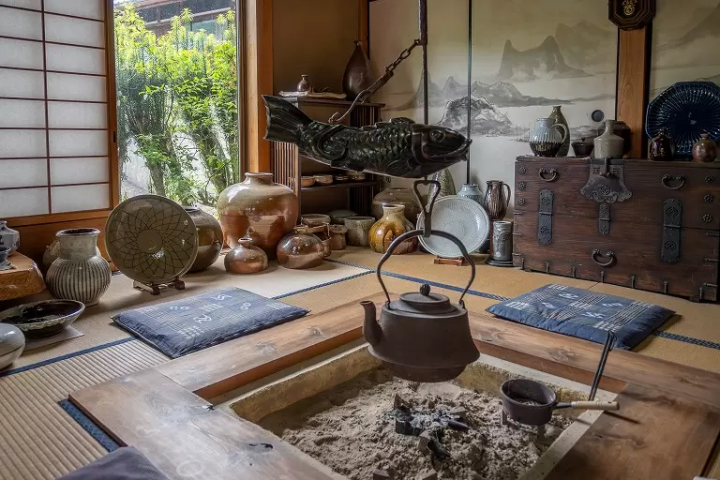
At Toshihikogama, wares are made by the 4th master Toshihiko Shimizu, and his son, Takeshi. They welcome guests to a Japanese estate room with a great atmosphere. Their pottery is on a hill so it feels great to overlook the area from their window.
The Japanese room is filled with their works with a hearth in the middle of the room. The hearth can provide warmth and cooking in winter with its fire. Here, you can find genuine traditional Japanese lifestyle.
As they are welcomed warmly, travelers can learn deeply about the appeals of Tamba Ware and the culture of the people who live there. It would be a special experience like being invited to the house of your Japanese friend.
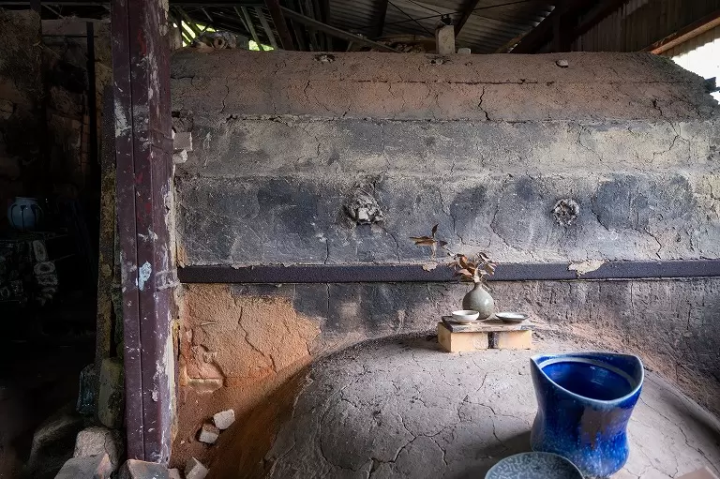
Toshihikogama’s climbing kiln enshrines the God of Fire.
Takeshi says, “Kilns have different personalities,” such as kilns with flames that become aggressive depending on the type of firewood and kilns that are calm no matter what type of firewood you burn. Kilns control high-temperature flame that gets hotter than 1,000 degrees Celsius so people believe in the God of Fire and their culture respects the God of Fire.
An Amazing Length! Tamba Ware’s Oldest Climbing Kiln
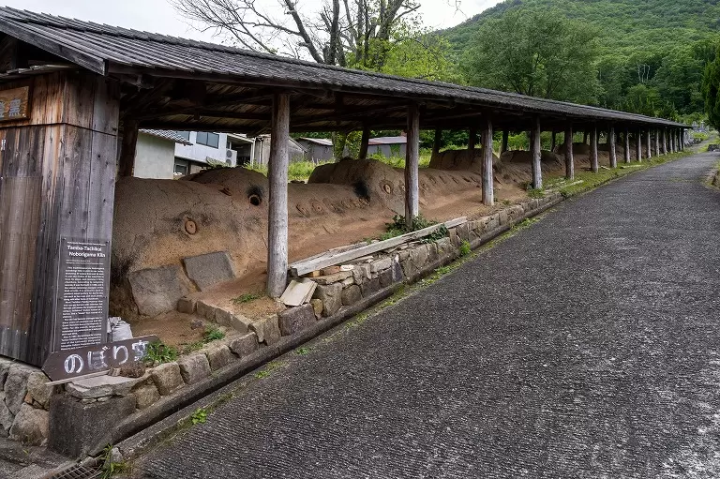
When you are exploring the narrow streets of the village, you may find Tamba Ware’s oldest remaining kiln, the Tachikui Climbing Kiln. This giant kiln was built in 1895 with a length of about 47 meters. Like a village of pottery, the kiln is right near houses.
Once a year, this climbing kiln is fired during the festival, Tamba Ware Village Spring Story Festival held in May. The kiln burns continuously day and night for 3 days
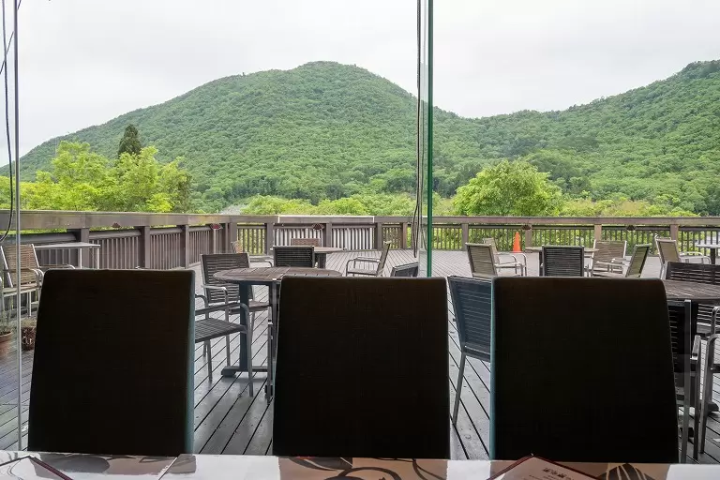
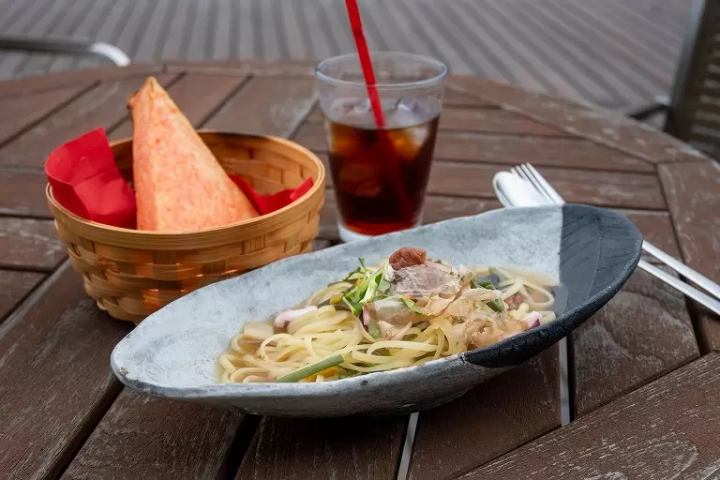
After you finish exploring, take a break at the dining café Kokuzo at The Museum of Ceramic Art, Hyogo. From the deck terrace, you can see the whole pottery village to the front. This amazing view is very popular.
Tamba Ware villagers live cherishing the gifts of nature. Tamba Ware containers are produced as they carefully pass on their lifestyles. You will realize their true appeals once you actually see and touch them.
The Museum of Ceramic Art, Hyogo
Address: 669-2135, 4 Kami-Tachikui, Kondacho, Tamba-Sasayama City, Hyogo Prefecture (Google map)
English website URL: https://www.mcart.jp/global/en/
Hours: 10:00 to 17:00 (entry until 16:30)
Closed days: Mondays (and New Year Holidays, maintenance days)
Parking: available (free)
Tamba Traditional Craft Park: Sue no Sato
Address: 669-2135, 3 Kami-Tachikui, Kondacho, Tamba-Sasayama City, Hyogo Prefecture (Google map)
No English website/Only Japanese website: https://tanbayaki.com/
Hours: 10:00 to 17:00
Closed days: Tuesdays (and New Year Holidays)
Parking: available
Toukatsugama
Address: 669-2135, 2 Kami-Tachikui, Kondacho, Tamba-Sasayama City, Hyogo Prefecture (Google map)
English can be displayed on the website: https://www.eonet.ne.jp/~toukatsu/index.html
Tansogama
Address: 669-2135, 327 Kami-Tachikui, Kondacho, Tamba-Sasayama City, Hyogo Prefecture (Google map)
No English website
Toshihikogama
Address: 669-2135, 396 Kami-Tachikui, Kondacho, Tamba-Sasayama City, Hyogo Prefecture (Google map)
No English website
Tachikui’s Climbing Kiln
Address: 669-2135, 3-5 Kami-Tachikui, Kondacho, Tamba-Sasayama City, Hyogo Prefecture (Google map)
No English website
Welcome to Hyogo Hyogo is a gateway to the Kansai region, which nurtures the blessed land that connects the Sea of Japan, the Chugoku Mountains, and the Seto Inland Sea, as well as the blessed climate. There are many spectacular views that will catch your eye, such as Himeji Castle, a World Heritage Site that was selected as one of the 100 Best Cherry Blossom Spots, and the panoramic night view from Mt. Rokko. The world-famous Kobe brand, KOBE BEEF, which is synonymous with Tajima beef, is one of Japan's leading beefs, and the sake rice ``Hyogo Yamada Nishiki'' is a gem that will surprise your tongue. Arima Onsen is a famous hot spring, and Kinosaki Onsen has appeared in many literary works. Surrounded by nature, you can relax your mind and body. You can come across memorable sounds such as the thunderous sounds of the whirlpools of Naruto on Awaji Island, and the dynamic sounds of the fireworks festivals held in various places in the summer. In the herb gardens and botanical gardens in the prefecture, you will be healed by the gentle and pleasant scent of herbs and flowers throughout the four seasons. Enjoy a new journey in Hyogo that stimulates the five senses of sight, taste, touch, hearing, and smell.
The contents on this page may partially contain automatic translation.































![[Yamanashi/ Hokuto City] 4 Hot New Spots Opening in 2026](https://resources.matcha-jp.com/resize/720x2000/2025/12/12-252747.webp)



